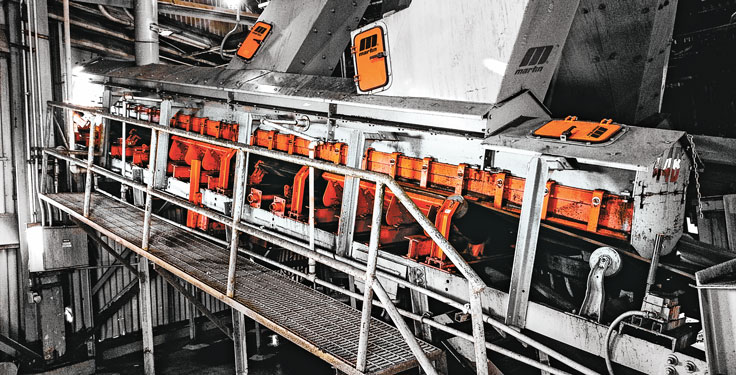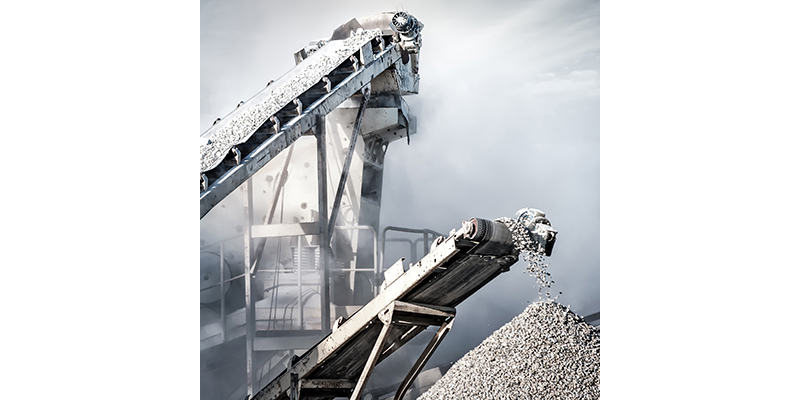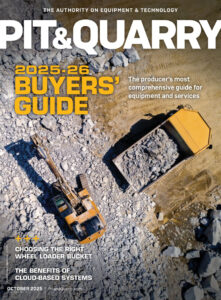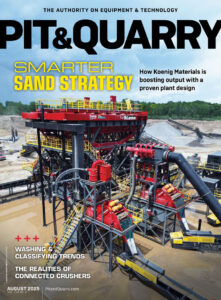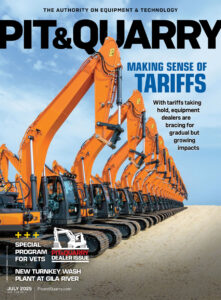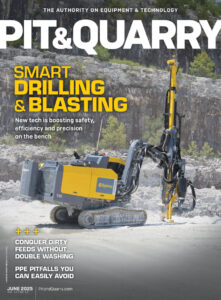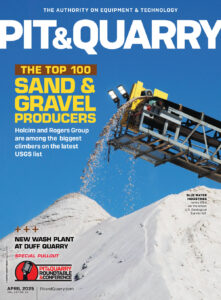Transfer points are vital connections between one piece of equipment and the next, but they are notorious for being sources of fugitive dust.
Many operators assume dust control is a futile battle that can never be overcome. The truth is the root causes are relatively simple to understand and straightforward to address.
The causes
• Material degradation. This is an obvious cause, as processing increases the percentage of fine particles in two main ways. First, as raw material is processed through crushers or mills, dust arises as fragments are broken down. Second, material impact – especially at transfer points, as finer particles break off – also causes dust.
• Air flow. Air flow through a transfer point is another contributor to airborne particulates. Air flow, however, can be adjusted by changing the loading angle and ensuring the proper placement of dust curtains. With a centered and sloped – or spoon-shaped loading configuration – material can be eased onto the belt with less impact.
• Poor transfer point design. This is yet another cause of dust emissions – and perhaps the largest one.
Conveyor systems are generally built for the production demand at the time they are constructed and designed, leaving little room for future expansion. An increase in production requires either a greater volume of conveyed material passing through each transfer point, or higher belt speeds (and, therefore, higher material speeds). Often, both are required to meet production targets.
Still, if a system is not designed to meet increased expectations, airborne dust can become a bellwether for a whole host of other subsequent issues – including increased spillage, material buildup and belt mistracking. These lead to more frequent stoppages and an increase in safety risks.
Dust control best practices
Fortunately, transfer points can be designed in ways that minimize dust. Consider the following:
1. Avoid belt sag with cradle support. For each transfer point, support the belt the entire length of the chute wall so it doesn’t sag away from skirting. The pressure from air turbulence is enough to push dust and fines out of these gaps.
2. Use wear liners to increase system life. Modern chute designs raise the height of the chute, providing more room for dust to settle in the stilling zone while providing room to place the external wear liner. Without it, the rubber skirting takes the force of falling materials, lowering the equipment’s life and requiring premature replacement.
3. Seal the environment with belt skirting. Single skirting should be cut to the belt’s trough angle for a tighter seal and mounted externally for safe, easy adjustment.
Self-adjusting skirting has spring-driven latches that offer slight downward pressure for reduced maintenance. Dual skirting offers a single skirt with a rubber flap that provides a second layer of sealing and protection from spillage and emissions.
4. Use dust collection only when necessary. “Passive dust control” first uses engineered design solutions such as controlled loading, wear liners, skirting, curtains and modular enclosures.
Dust bags and mechanical air cleaners remain effective, even when chute length or space restrictions prevent an extended settling zone. These use airflow to collect dust. Once the conveyor system stops, the dust is deposited back onto the belt.
Unfortunately, these can require more maintenance and monitoring, so sealing is preferred to minimize servicing costs.
5. Slow the exiting air velocity. Some flow of air is still going to be prevalent exiting the system. The key is slowing it to under 200 ft. per minute. That’s slow enough to allow for settlement.
Adding a tail panel and curtains is essential for this measure, but simply adding them at the ends does not accomplish the proper stilling environment required. Understanding the air flow and then placing them strategically is the key to reduce exiting air velocity.
Jerad Heitzler is program manager and lead instructor for Martin Engineering‘s Foundations training workshops.

